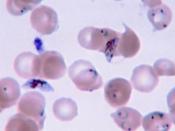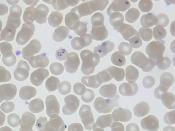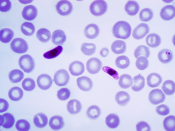Though cases are rare in America, Malaria is a major threat to the health of millions of people throughout globe. In Southern Africa it takes the lives of one to two million children each year. Although only four species of the malaria parasite infect humans, severe disease and deaths are overwhelmingly due to a single species, Plasmodium falciparum. This disease can cause significant changes in economic development by absence in the workplace and also can cause political turmoil. Some symptoms of this disease involve having chills, fever, anemia, and other similar nauseated indications. The development of new treatments and cures depend upon understanding how the malaria parasite interacts with the human host and the causes for its damage.
Malaria is transmitted into the human host by a female mosquito called anopheles. The mosquito host is a key factor in the three stage life cycle of the malaria parasite. Only the female mosquito can pass on the malaria parasite by injecting saliva into a human bite.
The saliva contains the P. falciparum protozoa, and once in the blood stream, the parasite flows to the liver where it multiplies, forming cysts filled with parasites. The cysts then burst, flooding the blood stream with parasites which then enter red blood cells.
When the anopheles mosquito bites a human and injects a substance from her salivary glands, primitive malarial parasites called sporozoites, also get inserted. These sporozoites can then circulate in the blood before it then settles in the liver where it establishes an infection. This is where the cells can multiply into merozoites, which in one liver cell, can multiply into thousands. Merozoites can stay in the liver for a few weeks before any significant symptoms are noticeable. When the liver cells are overwhelmed with merozoites, the cells rupture and free merozoites...



Very Nice
This is a very well written essay and I found it very interesting
0 out of 0 people found this comment useful.